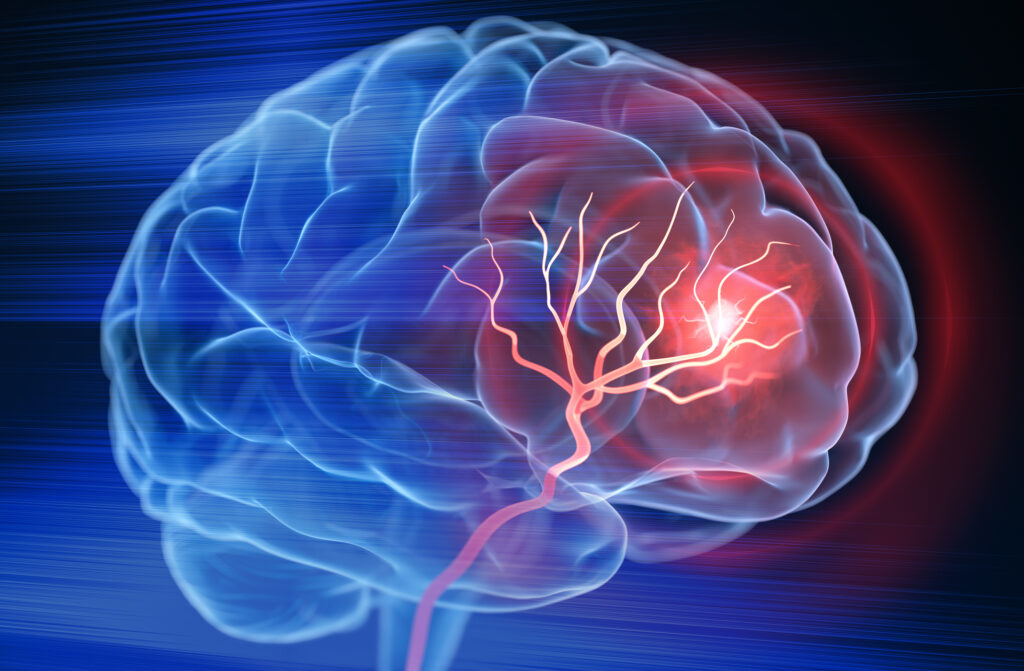A stroke occurs when a blocked artery (ischemic stroke) or a ruptured blood vessel (hemorrhagic stroke) disrupts the blood supply to the brain, causing the death of brain cells when they do not receive essential oxygen and nutrients. Stroke is a leading cause of death and disability worldwide, affecting one in four adults aged 25 and above.
The most common form of stroke is the ischemic stroke, with almost nine out of 10 stroke cases. Once a stroke occurs, a race against time begins. The current standard-of-care, which is a treatment that breaks up the blood clots in the blocked arteries, has to be delivered to the patient within four and a half hours of the first symptoms of stroke appearing.
Recently, researchers at the University of Southern California (USC) Keck School of Medicine in the U.S., in collaboration with the University of Zurich and ETH Zurich in Switzerland, discovered a way in which stroke treatment could be delivered days after the first symptoms appear and still aid recovery.
In their study, published in the journal Nature Communications and titled “Neural Xenografts Contribute to Long-Term Recovery in Stroke via Molecular Graft-Host Crosstalk,” the researchers reprogrammed human blood cells into induced pluripotent stem cell (iPSC)-derived neural progenitor cells. They then transplanted these neural stem cells directly into the damaged brain tissue of mice that had had ischemic strokes. The transplant occurred ten days after the mice had suffered the stroke.
The neural stem cells survive for a little longer than five weeks. So after five weeks, the researchers compared the mice who had received a neural stem cell transplant with mice who had undergone surgery after the stroke.
The research team used a deep learning-based analysis to determine how the mice recovered from the stroke after the stem cell transplant versus the surgery. The artificial intelligence helped the researchers get an in-depth look at the animal’s movements, showing in detail how their limbs moved while walking and climbing.
“Recovery can be hard to determine in mice, so we needed to see these little differences,” explained co-corresponding author Ruslan Rust, PhD, assistant professor of research physiology and neuroscience at the Keck School of Medicine. “The unbiased view we got through this deep learning tool gave us a lot more detail about this complex process.”
The researchers discovered that mice that had had a neural stem cell transplant ten days after the stroke showed greater improvement in climbing and walking movements, as well as fine-motor recovery, versus mice that had undergone surgery.
Moreover, the brains of mice treated with the stem cells also showed that the stem cells had differentiated into mature neurons, contributing to the regeneration of damaged tissue through the formation of new blood vessels, the repair of the blood-brain barrier, reduced inflammation, and the formation of new neurons.
To understand the underlying mechanisms driving these results, the researchers studied the types of cells that die when a stroke occurs. They discovered that in the area where the stroke occurs, 50% of neurons secreting the neurotransmitter gamma-aminobutyric acid (GABA) had died. However, it has previously been shown that GABA-secreting neurons are actually essential for stroke recovery.
Using single-nucleus RNA sequencing, the researchers then found that the majority of transplanted neural stem cells actually became GABA-secreting neurons, supporting the theory that a brain injured by a stroke drives the development of these neural stem cells.
Upon studying the interactions between the transplanted neural stem cells and other cells in the brain, the research team also discovered several signaling pathways that have previously been associated with the regeneration of neurons, the formation of neural connections, and the way in which neurons branch out within the brain.
“Mechanistic insight can be quite important if we seek to inform new therapies or improve emerging ones,” Rust explained. “Understanding the mechanisms allows us to think about adapting a drug that regulates them—perhaps one that’s already clinically approved for a different disease. It could open up a whole new wave of therapies.”
The researchers are now studying other ways in which to boost the activity in the pathways they identified. They also want to find ways to prolong the life and positive effects of the transplanted stem cells so that people who have suffered a stroke can benefit from the therapy for the rest of their lives.
“There are a lot of patients who cannot get the acute treatment, and their blood vessels remain blocked,” Rust said. “If we can bring this treatment to the clinic in the future, it may help patients who have long-term symptoms or large strokes see recovery.”

